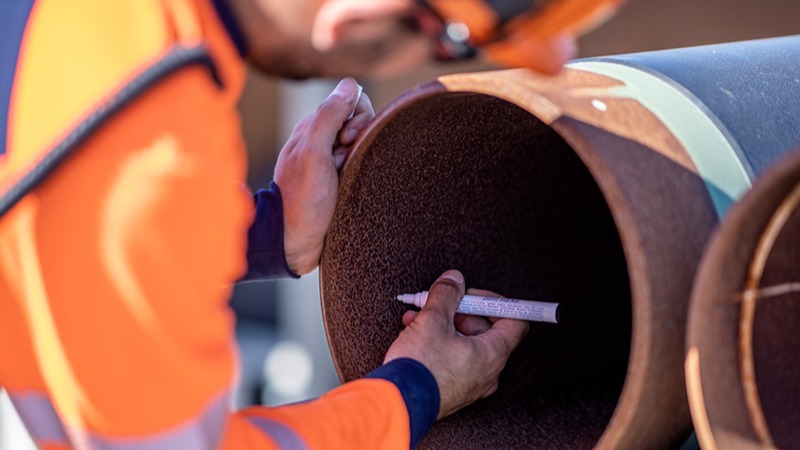Urgence gaz 0 800 028 800

Gas storage: tried and tested expertise for dependable partnerships
Our storage infrastructures are at the crossroads of European gas exchanges. We operate two underground gas storage facilities. Those infrastructures complement our gas transport gas activities, giving us huge flexibility in managing flows.
At Teréga, gas storage and experience go hand in hand
Developed under different conditions, our underground storage facilities at Lussagnet (Landes) and Izaute (Gers) are only 10 km apart in geographical terms. They help supply gas to the transport and distribution grids in the far southwest, as well as part of Spain and the rest of France.
The Lussagnet site began operating in 1957, at the same time as the Lacq gas field (Pyrénées-Atlantiques) came on stream, and was intended at that time to regulate the production of natural gas from the Lacq plant. Its capacity has been increased fourfold since it was created.
The Izaute storage site, which came online in the early 1980s, was created in response to an increasing demand for gas.
Since then, with continuing growth and the Europe-wide opening up of markets, which has multiplied exchanges, our Lussagnet and Izaute storage facilities have been developed further. The result is that our storage products and services are competitive, flexible and offer maximum availability. They give our customers the flexibility they need to supply their end consumers.
How does Teréga ensure continuity of gas supplies?
Gas underground storage sites enable us to meet a number of needs:
to deal with seasonal variations in demand for gas;
to cover peaks in consumption.
While the main supply flows are relatively constant throughout the year, the needs of French consumers vary considerably with the seasons:
monthly consumption in the winter can be almost five times as high as in the summer months.
Our gas storage infrastructures enable our customers to exercise a strategic balancing role by adjusting the amounts in storage. Injected into storage during the summer, gas can then be drawn off over the winter period to meet demand. The gas stored at Lussagnet and Izaute is chiefly brought in by pipeline:
from production sites;
via methane terminals.
Our storage sites therefore enable us to guarantee continuity of supply by supplying the additional gas needed to cover consumers’ needs at any given moment.
Gas storage at teréga: operating principles
Our expertise in gas storage is mainly built around two majors principles: the injection and the draw-off that includes processing. Upon arrival from the transport grid, the gas is compressed and injected via the wells into the underground storage reservoir during the summer period. As it exerts pressure, it then displaces the water contained in the storage sand and accumulates there.
Rigorous operation of installations
The operating wells
These enable the surface installations to be connected to the underground geological layer in which the gas is stored. This is also known as the “reservoir” rock. This equipment plays an essential role in the gas injection and draw-off phases. We install it in clusters: areas developed to accommodate several wells, the associated pipework, and the equipment needed for drilling machinery.
Surface installations
These chiefly consist of a network of gas pipelines. They enable the wells to be connected to the processing and compression installations. This is where all the installations devoted to processing the drawn-off gas can be found. They also include gas compression units for the draw-off and injection phases.
The treatment and compression installations are grouped together on the Lussagnet site and controlled from the control room.
What is the purpose of a Recognised Inspection Department in gas storage?
Our Lussagnet storage centre has had a Recognised Inspection Department (SIR) since 2008. In fact, our installations at the Lussagnet storage centre are subject to regulations on the monitoring of pressure equipment (PE) in operation. The SIR therefore implements inspection plans based on two methodologies: DT84 and API 581 (Risk Based Inspection). The process applies to the monitoring of equipment under mandatory supervision and equipment under voluntary supervision, roughly 800 pieces of equipment.

As part of its work, the SIR:
ensures annual service monitoring;
carries out inspections of the installations during scheduled regulatory full shutdowns every two years;
recommends repairs or modifications;
takes part in projects;
ensures monitoring of the construction of new installations.
Approved by the DREAL (French Regional Directorate for Environment, Development and Housing), it is subject to an annual meeting and two detailed inspection visits every year. The DREAL itself renewed its approval in 2018 for four years.
The Teréga rule of three for gas storage
Since the opening up of gas markets, our Lussagnet and Izaute storage facilities have shown they have the resources to meet gas suppliers’ flexibility requirements. The notion of continuous improvement is central to our storage management system.
So our expertise revolves around three essential requirements: quality, safety and care for the environment. To achieve that, we rely on an extensive range of certifications.
Teréga leads the way in certification across all our gas transport and storage activities
ISO 9001, for our quality management system;
ISO 14001, for our environmental management system;
ISO 50001, for our energy efficiency management;
ISO 45001, for workplace safety and health protection.


Pierre ChiquetMANAGER, TERÉGA GEOSCIENCE DEPARTMENTIn 2018, we further enhanced our storage monitoring tools with the acquisition of a geomechanical modelling tool. This is a digital solution which allows us to run predictive simulations, taking storage development programmes into account, and reproduce extreme injection and draw-off conditions.
Gas storage (also) means greater safety and modernisation
Since 2007, alongside our development plan, we embarked on a major safety and modernisation plan for our storage infrastructures. Our objective is to maintain a high-level guarantee of availability for our installations and a high quality of service to our customers.
In practical terms, that proactive approach has led to:
the construction of a new High Environmental Quality (HQE) building, designed to house the offices and control room, at the edge of the site to ensure staff enjoy a high level of protection;
the replacement of old wells by drilling new ones. They have a double safety barrier and incorporate the very latest technology;
the modification of the dehydration units (TEG regeneration) at the Lussagnet centre and a new emergency depressurisation system;
the replacement of old compressors with new, more energy efficient models.
The Teréga Geoscience department
The role of our Geoscience department is to monitor the integrity and performance of our storage. It meets our regulatory obligations on monitoring the leak-tightness of geological structures and wells. Its responsibilities include:
assessing the piezometric and chemical impact of injection and draw-off cycles in the aquifer;
assessing the match between productivity of the facilities and commercial offers;
studying the integration of renewable gases (biomethane, hydrogen) into existing storage and new geological structures etc.








